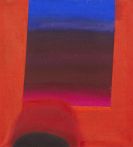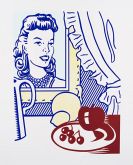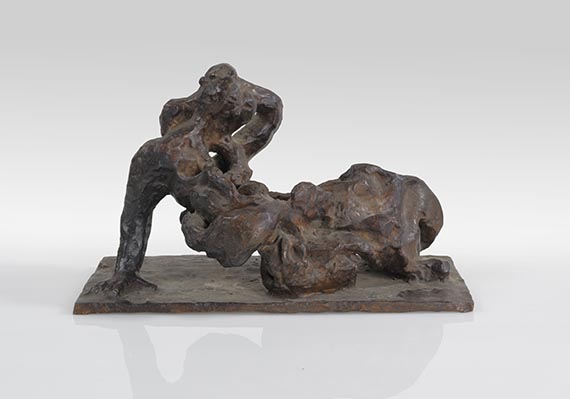
Malcolm Morley
London
1931
Malcolm Morley was born in London in 1931. His childhood memories of the Blitz would continue to shape his repertoire of motifs: the bombed city, the Royal Navy, a model airplane he played with. After an adolescence spent in the bleak post-war years, during which Morley even had a brief stint in prison for theft, he attended the Camberwell School of Arts and Crafts in 1952-53 and the Royal College of Art from 1954 until 1957.
Drawn to Abstract Expressionism, Malcolm Morley finally left London for New York in 1958. Dissatisfied with his pictures, at that time light monochrome relief surfaces articulated in the horizontal, Morley now sought representational motifs. At first working with a reduced palette from newspaper photos of battleships, Malcolm Morley developed a Photorealist style in 1964, which entailed accurately transferring colour photos as raster elements to canvas.
Morley's practice of dissolving a motif into non-representational raster surfaces, which he would sometimes paint on upside-down canvases, continued to link him with his abstract beginnings. Morley developed this unusual act of pictorial creation into Performances, in which the occasionally defective end product, the representational image, was of secondary significance. Despite his individuality, Morley is regarded as a precursor of Photorealism, for which he coined the term Superrealism. Malcolm Morley's motifs at the time were both contemporary scenes, which placed him close to Pop art, and copies of Old Master paintings.
In the early 1970s gestural touches began to break into Morley's pictures and his motifs increasingly attested to violence and destruction (for instance "Train Wreck", 1975).
While staying in Florida, Morley developed a new technique: he now executed his paintings after watercolors he did as preliminaries. His subjects were inspired by Greek mythology and Mediterranean scenery encountered on his extensive travels.
By the early 1980s Malcolm Morley was so well established as a leading Neo-Expressionist that he was the first winner of the prestigious Turner Prize in London (in 1984). Towards the close of the 1980s, Morley returned to his early motif repertoire of ships and planes, which now figured in large-scale installations that were a combination of paintings and mobiles. Morley was now painting from models observed through a camera obscura system.
By the mid-1990s, however, he again reverted to more exact rendering, now using model planes from sets, which he represented in two dimensions but with an abstract tendency. In recent years Malcolm Morley has painted in a figurative style accompanied by a reticently gestural approach, translating photographic images into spatially complex paintings. Morley has remained in America, his adopted country.
Would you like to sell a work by Malcolm Morley?
Infos for seller











